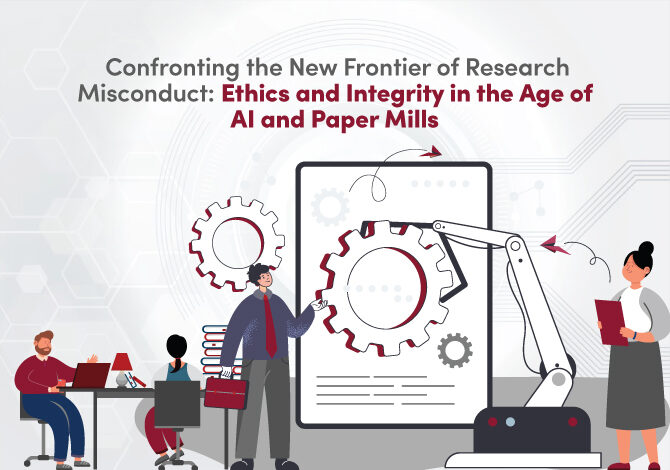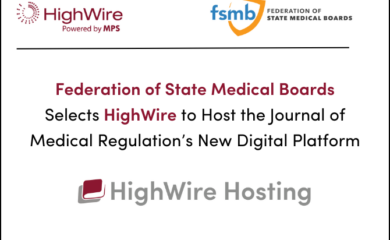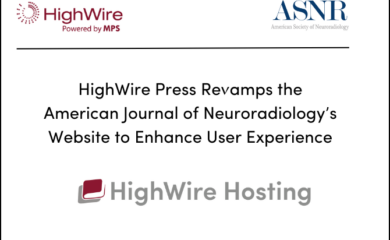The landscape of scholarly publishing is under siege—from forces visible and hidden, technological and human. While research integrity has always required vigilance, the surge in misconduct linked to AI-generated content, fraudulent submissions, and bad-faith peer review has intensified the urgency for robust ethical frameworks and decisive editorial action.
From AI misuse to organized fraud through paper mills, the threats are multiplying. But so are the tools, policies, and collaborative solutions designed to safeguard the scientific record.
The Rise of AI and the Erosion of Editorial Trust
Generative AI has transformed research and publishing workflows—but it has also blurred the lines between automation and authorship, assistance and deception.
Example Use Case: A reviewer flagged suspected AI authorship in a submitted manuscript after noticing inconsistencies and a generic writing pattern. Running the text through an AI detector returned a high probability of AI-generated content. However, this raised a new ethical dilemma: was the reviewer permitted to upload a confidential manuscript to an external tool? What if that tool stored the data? Was the suspicion alone enough to trigger an editorial action?
AI review tools can mislead as often as they clarify. Detection is imperfect, and over-reliance risks false accusations. Editorial guidelines must address these ambiguities—balancing transparency, confidentiality, and due process.
Best Practices Emerging:
- Require authors to disclose AI use in manuscript preparation.
- Encourage reviewers to consult editors before using AI tools.
- Clarify policies in reviewer guidelines, especially regarding confidentiality risks.
- Repeat AI checks in-house, using vetted tools that do not retain data (e.g., integrated features in iThenticate).
Reviewer Manipulation: When Peer Review Isn’t What It Seems
Example Use Case: A single reviewer submitted over 20 reviews for a conference, all formatted in a seemingly rigorous structure—bulleted lists, section headings, lengthy commentary. On closer inspection, these reviews were generic, self-contradictory, and occasionally referenced non-existent statistical analyses. The reviewer was also an author in the same conference.
This isn’t just a question of low-quality feedback—it’s a serious breach of ethical boundaries.
Editorial Responses Include:
- Using tools to screen reviews for similarity patterns or red flags.
- Requiring reviewers to attest to authorship and originality of their feedback.
- Training editors to recognize AI-generated reviews and overly generic critique patterns.
Paper Mills and the Industrialization of Fraud
Perhaps the most insidious threat today comes from paper mills: coordinated networks that produce and sell fraudulent manuscripts for profit. These operations can fabricate data, images, even reviewer identities. They often offer authorship positions for sale after acceptance.
Warning Signs Include:
- Reused flow cytometry or western blot images across unrelated papers.
- Tortured phrases or semantically meaningless AI-generated language.
- Suspiciously similar manuscripts appearing under different author names or institutions.
- ORCID or email inconsistencies, including sudden changes post-acceptance.
Tools Being Used to Fight Back:
- Papermill Alarm – fast, automated detection of suspicious manuscripts.
- Seek & Blastn – checks nucleotide sequences for fabrication or copy errors.
- Crossplag – detects cross-language plagiarism.
- Imagetwin – flags image duplication or manipulation.
These tools are increasingly built into editorial workflows, allowing editors to flag high-risk submissions early.
Research Integrity Investigations: Frivolous or Foundational?
While fake papers pose one kind of threat, another comes from misuse of public platforms like PubPeer or social media to launch spurious or malicious allegations. Editorial offices face the delicate task of investigating claims while protecting researchers from targeted harassment.
Example Use Case: Over 60 anonymous allegations were filed over 12 years against a researcher known pseudonymously. None were substantiated. But the reputational damage persisted, amplified by repeated posts on online forums.
Editorial Lessons Learned:
- Develop structured workflows for responding to public allegations.
- Differentiate good-faith whistleblowing from harassment.
- Balance due diligence with protection against reputational harm.
Toward a Proactive Culture of Transparency
Addressing these challenges requires more than reactive policies—it demands a shift in culture. Journals and institutions must collaborate closely, share information responsibly, and prioritize the integrity of the research record above reputational risk management.
A working group of publishers and research integrity officers proposed bold changes to how misconduct is handled:
- Expand “need-to-know” standards so institutions can inform journals of unreliable data before misconduct rulings are finalized.
- Separate data integrity concerns from assessments of individual culpability to allow earlier corrective action.
- Standardize policy language around author responsibilities and editor communication with institutions.
Regulatory Evolution: Clarifying the Rules
In October 2023, the U.S. Office of Research Integrity issued proposed revisions to 42 CFR Part 93, which governs research misconduct proceedings. The new rule—effective January 1, 2025—will:
- Allow institutions to alert journals about suspect data earlier.
- Shorten timelines for maintaining confidentiality.
- Clarify that journals can correct the record even in the absence of formal misconduct findings.
This regulatory clarity supports a more agile, collaborative, and evidence-focused approach to protecting the scientific record.
Redefining Ethical Editorial Practice
The tools are improving. The policies are catching up. But in the end, it comes down to editorial courage and consistency. Editors must:
- Be willing to flag concerns, even under time pressure.
- Be transparent in retraction notices, following COPE and NISO guidelines.
- Embrace expressions of concern as valid tools when resolution is delayed.
- Support open peer review and verified reviewer credentials.
Conclusion: Integrity Is Not Automatic
Automation may ease some burdens, but it cannot replace ethical judgment. In a publishing landscape where technology and fraud evolve in tandem, maintaining trust requires vigilance, policy reform, shared intelligence—and above all, a commitment to the truth, even when it’s inconvenient.
The future of ethical publishing will be built not only on innovation, but on resolve: to say what’s wrong, to stand by what’s right, and to ensure that the scientific record reflects rigor, not just output.
– By Tony Alves



